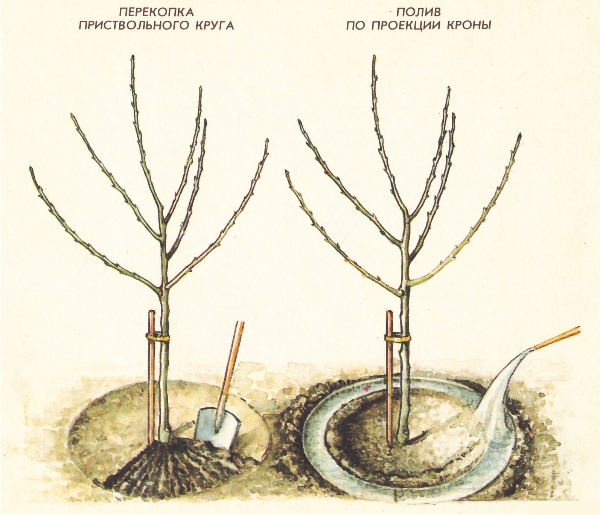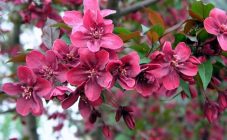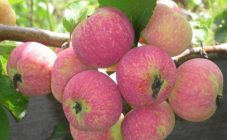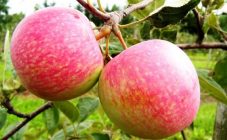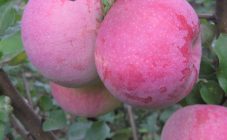Content:
The Streyfling apple tree belongs to the autumn varieties, yielding large yields of delicious and juicy apples every year. They can be stored for a long time after being removed from the tree in appropriate conditions, delight with their taste during the entire shelf life, and these fruits can also be used to make juice, jam or jam. This is why this variety has been so popular among gardeners for many years, despite the fact that there are now many other new varieties with good characteristics.
General information about the variety
The Streifling apple variety is one of the few cultivated for decades, but has not lost its popularity among gardeners in many regions of our country and neighboring countries. The birthplace of this fruit tree is the Baltic States, from which the Streyfling seedlings spread to the central regions of our country. This variety was obtained by pollination, without the participation of selection.
This variety has other names as well:
- Shaft;
- apple tree Autumn striped;
- Starostino.
Characteristics and description of the Streifling apple tree
This apple tree has a very powerful central trunk and main pubescent branches forming a wide spreading crown. All shoots are well leafy, foliage with noticeable pubescence, green color with a grayish tint. Ovaries are formed on ringlets and young one- or two-year shoots. The kidneys are more than medium in size, gray in color, slightly convex.
The flowers are large, saucer or cupped. The color of the buds is light pink, the color of the petals is boiling white. The petals are rounded, slightly concave, overlapping. The pistil is thick, the stigmas are flush with the anthers.
The branches of seedlings have a high vigor of growth, already 5-6 seasons after planting in a permanent place, this apple tree reaches its maximum height - up to 8 m. The crown reaches its maximum width of 7.5-8 m by season 10.
The expanding crown of Streifling creates a pleasant partial shade, this fruit tree is especially beautiful at the time of flowering and at the time of ripening - red stripes appear on green apples with a yellow tint under the gentle rays of the sun.
According to the description of the Autumn striped apple tree, ripe fruits are of medium size and weight (up to 180 g), but sometimes huge apples can be picked - up to 280 g in weight. These apples are low in calories - each of them contains no more than 75 kcal. The taste of these fruits is sweet, with a slight sourness, ripe apples exude a delicate spicy aroma, the pulp is loose, juicy, white with a yellowish tinge. The seeds are collected in the center of the apple, brown in color, long, large in size.
Ripe fruits have an excellent presentation and excellent taste. The skin is of medium thickness, when eaten, it is practically not felt, when the fruit ripens, it is covered with a light waxy coating.
The autumn striped apple is a variety of apples, the fruits of which contain a large amount of useful substances: almost the entire set of vitamins (only vitamin D is lacking), macro and microelements (potassium, calcium, magnesium, manganese, zinc and iodine).
The harvest is harvested at the beginning of September, since ripe fruits do not stay on the branches for a long time, then they need to be collected on time to bookmark them for storage. They can be stored at home, but the harvest can be stored in the cellar until the New Year (and longer).
This fruit tree is self-pollinating and does not require planting a number of pollinating apple trees. The variety has a high resistance to frost, resistance to major apple diseases is average.
Agrotechnics
In order for the seedling to begin and grow well, all the rules for planting and further care for this crop should be observed. The best time for planting is considered early spring (after the soil has completely warmed up).
Since this variety was brought from the Baltic States, where the climate is rather humid, when planting in Russia, it should select well-moistened and warmed up soils. On clay and sandy soils, this fruit crop grows worse than on fertile black soil or well-fertilized loamy soils.
7-10 days before planting, planting pits should be prepared. Their size is 1.1 m in diameter and 0.7 m in depth. The top fertile layer of garden soil is laid on the bottom, then a layer of fertilizers is placed, consisting of wood ash, potassium sulfate, superphosphate and rotted mullein. Then they are mixed well with the garden soil, another layer of soil is added to fill the hole about half. A stake is dug into the hole, and a seedling is installed in the center, which is tied to the stake, the root system is carefully straightened along the diameter of the hole, the remaining soil is poured on top, tamped. Apply 25-30 liters of water under each seedling.
Further care for the growing trees consists in regular watering, loosening the soil, removing weeds, applying fertilizers, and also carrying out formative pruning. The pruning process removes old, damaged, dry and frostbitten branches. Usually pruning is carried out in early spring, before the buds begin to swell, and in autumn, when all the foliage has fallen.
In the first decade of May, a urea solution should be added to the trunk circle. To do this, 1 glass of urea is diluted in 2 buckets of water, this feeding is enough for 2 m2. At the beginning of summer, it is worth feeding the apple tree with complex mineral fertilizer. In the middle of summer, the trunk circle is dug up and planted with green manure plants (lupine, peas, grain). After 1-1.5 months, these plants are dug up.
Advantages and disadvantages of the variety
The undoubted advantages of the variety include:
- yield - much higher than average (in good years, more than 300 kg of crop can be harvested from one tree);
- excellent presentation and good taste of ripe apples;
- the harvested crop is versatile - it is eaten fresh, and also used for subsequent processing;
- fruits are even and smooth, differ little in size;
- high resistance to cold;
- scab and moth rarely affect streifling.
Negative features of the variety:
- apples ripen late;
- fruiting is irregular;
- this fruit tree does not tolerate drought well.
Despite the shortcomings, Streyfling is still popular with summer residents, this variety can be found in many areas in the central regions, the Volga region, the middle lane and some other regions of Russia. Each summer resident decides for himself to plant or not plant this apple tree in his garden, but whoever has tried ripe apples from this tree will definitely want to plant Streifling in his garden.

